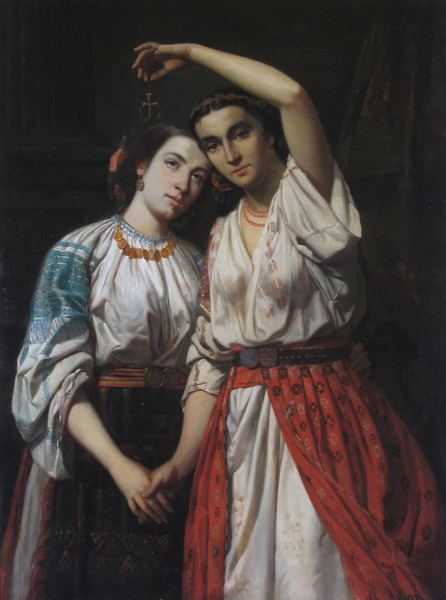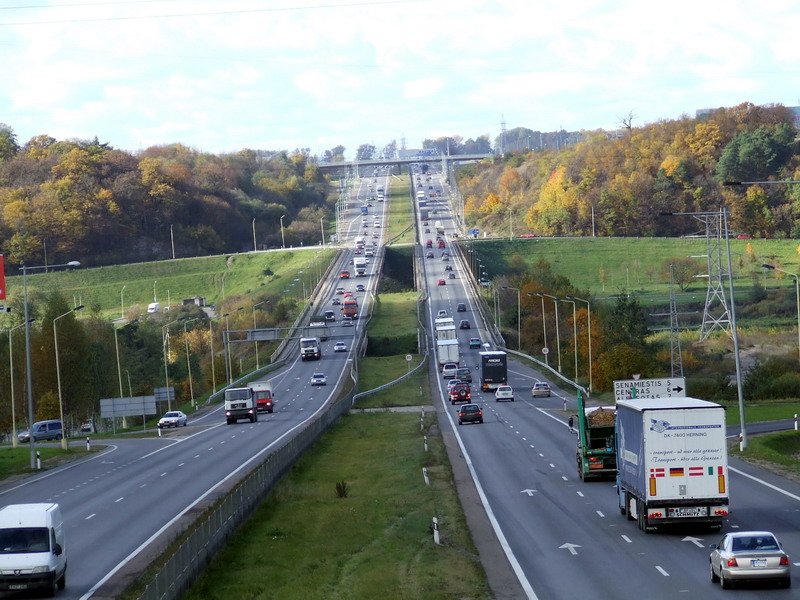|
Nicolae Bălcescu, Bacău
Nicolae Bălcescu (until 1948 ''Ferdinand'', and previously ''Satu Nou'', hu, Ferdinándújfalu) is a commune in Bacău County, Western Moldavia, Romania. It is composed of five villages: Buchila, Galbeni, Lărguța, Nicolae Bălcescu, and Valea Seacă. It also included Bălțata and Sărata villages until 2004, when they were split off to form Sărata Commune. The commune is located in the central part of the county, just south of the county seat, Bacău. It lies on the right banks of the rivers Bistrița and Siret; the two rivers meet at the Galbeni reservoir, on the east side of the commune. Nicolae Bălcescu is crossed by the DN2 road, which connects Bacău to Focșani and forms part of the European route E85. The CFR rail line from Bacău to Mărășești, which also passes through the commune, is served by the Valea Seacă station. According to the 2011 census, the commune has 7,169 inhabitants; 90.14% of them are ethnic Romanians and 1.28% are ethnic Hungarians Hun ... [...More Info...] [...Related Items...] OR: [Wikipedia] [Google] [Baidu] |
Commune In Romania
A commune (''comună'' in Romanian language, Romanian) is the lowest level of administrative subdivision in Romania. There are 2,686 communes in Romania. The commune is the rural subdivision of a Counties of Romania, county. Urban areas, such as towns and cities within a county, are given the status of ''Cities in Romania, city'' or ''Municipality in Romania, municipality''. In principle, a commune can contain any size population, but in practice, when a commune becomes relatively urbanised and exceeds approximately 10,000 residents, it is usually granted city status. Although cities are on the same administrative level as communes, their local governments are structured in a way that gives them more power. Some urban or semi-urban areas of fewer than 10,000 inhabitants have also been given city status. Each commune is administered by a mayor (''primar'' in Romanian). A commune is made up of one or more villages which do not themselves have an administrative function. Communes ... [...More Info...] [...Related Items...] OR: [Wikipedia] [Google] [Baidu] |
Bacău County
Bacău County () is a county ( județ) of Romania, in Western Moldavia, with its capital city at Bacău. It has one commune, Ghimeș-Făget, in Transylvania. Geography This county has a total area of . In the western part of the county there are mountains from the Eastern Carpathian group. Here, along the valleys of the Oituz River and Trotuș River, there are two important links between Moldavia and Transylvania. On the East side, the heights decrease and the lowest point can be found on the Siret River valley which crosses the county from North to South down the middle. On the East side there is the Moldavian Plateau crossed by many small rivers. Flora and fauna Bears, wolves, foxes, wild boars, and squirrels inhabit Bacău County's mountains, particularly in its rural Slănic-Moldova region; the remnants of the local deers are preserved in Mănăstirea Cașin. Neighbours *Vaslui County in the East. *Harghita County and Covasna County in the West. *Neamț County ... [...More Info...] [...Related Items...] OR: [Wikipedia] [Google] [Baidu] |
Western Moldavia
Moldavia ( ro, Moldova), also called Western Moldavia or Romanian Moldavia, is the historic and geographical part of the former Principality of Moldavia situated in eastern and north-eastern Romania. Until its union with Wallachia in 1859, the Principality of Moldavia also included, at various times in its history, the regions of Bessarabia (with the Budjak), all of Bukovina, and Hertsa; the larger part of the former is nowadays the independent state of Moldova, while the rest of it, the northern part of Bukovina, and Hertsa form territories of Ukraine. Romanian Moldavia consists of eight counties, spanning over 18% of Romania's territory. Six out of the 8 counties make up Romania's designated Nord-Est development region, while the two southern counties are included within Romania's Sud-Est development region. History Moldavian dialect The delimitation of the Moldavian dialect, as with all other Romanian dialects, is made primarily by analyzing its phonetic features and only ... [...More Info...] [...Related Items...] OR: [Wikipedia] [Google] [Baidu] |
Romania
Romania ( ; ro, România ) is a country located at the crossroads of Central Europe, Central, Eastern Europe, Eastern, and Southeast Europe, Southeastern Europe. It borders Bulgaria to the south, Ukraine to the north, Hungary to the west, Serbia to the southwest, Moldova to the east, and the Black Sea to the southeast. It has a predominantly Temperate climate, temperate-continental climate, and an area of , with a population of around 19 million. Romania is the List of European countries by area, twelfth-largest country in Europe and the List of European Union member states by population, sixth-most populous member state of the European Union. Its capital and largest city is Bucharest, followed by Iași, Cluj-Napoca, Timișoara, Constanța, Craiova, Brașov, and Galați. The Danube, Europe's second-longest river, rises in Germany's Black Forest and flows in a southeasterly direction for , before emptying into Romania's Danube Delta. The Carpathian Mountains, which cross Roma ... [...More Info...] [...Related Items...] OR: [Wikipedia] [Google] [Baidu] |
Sărata, Bacău
Sărata is a Commune in Romania, commune in Bacău County, Western Moldavia, Romania. It is composed of two villages, Bălțata and Sărata. These were part of Nicolae Bălcescu, Bacău, Nicolae Bălcescu Commune until 2004, when they were split off. At the 2011 census, 99.8% of inhabitants were Romanians, ethnic Romanians. References Communes in Bacău County Localities in Western Moldavia {{Bacău-geo-stub ... [...More Info...] [...Related Items...] OR: [Wikipedia] [Google] [Baidu] |
Bacău
Bacău ( , , ; hu, Bákó; la, Bacovia) is the main city in Bacău County, Romania. At the 2016 national estimation it had a population of 196,883, making it the 12th largest city in Romania. The city is situated in the historical region of Moldavia, at the foothills of the Carpathian Mountains, and on the Bistrița River (which meets the Siret River about to the south of Bacău). The Ghimeș Pass links Bacău to the region of Transylvania. Etymology The town's name, which features in Old Church Slavonic documents as ''Bako'', ''Bakova'' or ''Bakovia'', comes most probably from a personal name. Men bearing the name Bakó or Bako are documented in medieval TransylvaniaRădvan 2010, p. 456. and in 15th-century Bulgaria, but according to Victor Spinei the name itself is of Turkicmost probably of Cuman or Pechenegorigin. Nicolae Iorga believes that the city's name is of Hungarian origin (as Adjud and Sascut). Another theory suggests that the town's name has a Slavic origin, ... [...More Info...] [...Related Items...] OR: [Wikipedia] [Google] [Baidu] |
Bistrița (Siret)
The Bistrița (; also called as Bistrița Aurie or Bistrița Moldoveană; hu, Aranyos-Beszterce) is a river in the Romanian regions of Maramureș, Bukovina and Moldavia (most of its length). It is a right tributary of the river Siret. At Chetriș, near Bacău, it flows into the Siret. Its source is in the Rodna Mountains, at the foot of the . It flows through the counties Bistrița-Năsăud, Suceava, Neamț, and Bacău. The towns Vatra Dornei, Bicaz, Piatra Neamț, Roznov, Buhuși, and Bacău lie along the Bistrița. The Bistrița is long, and its basin area is . p. 13 [...More Info...] [...Related Items...] OR: [Wikipedia] [Google] [Baidu] |
Siret (river)
The Siret or Sireth ( uk, Сірет or Серет, ro, Siret , hu, Szeret, russian: Сирет) is a river that rises from the Carpathians in the Northern Bukovina region of Ukraine, and flows southward into Romania before it joins the Danube. It is long,Planul de management al spațiului hidrografic Siret Administrația Națională Apele Române of which in Romania, and its basin area is , of which in Romania. Its average discharge is . [...More Info...] [...Related Items...] OR: [Wikipedia] [Google] [Baidu] |
Focșani
Focșani (; yi, פֿאָקשאַן, Fokshan) is the capital city of Vrancea County in Romania on the banks the river Milcov, in the historical region of Moldavia. It has a population () of 79,315. Geography Focșani lies at the foot of the Curvature Carpathians, at a point of convergence for tectonic geologic faults, which raises the risk of earthquakes in the vicinity. Though Vrancea County is one of the most popular wine-producing regions in Romania, Odobești being just to the northwest, in Romania, Focșani itself is not considered a wine-producing center. The wine sold as ''Weisse von Fokshan'' in Germany and some other European countries is generally a ''Fetească Albă de Odobești'' wine, and practically a second-rated wine which does not comply to the European Union rules of naming the regions of origin of wines. The vicinity is rich in minerals such as iron, copper, coal, and petroleum. The city administers two villages, Mândrești-Moldova and Mândrești-Munteni. ... [...More Info...] [...Related Items...] OR: [Wikipedia] [Google] [Baidu] |
European Route E85
European route E85 is part of the International E-road network, which is a series of main roads in Europe. The E 85 starts from Klaipėda (Lithuania) runs south through Belarus, Ukraine, Romania, Bulgaria to Greece, ending at Alexandroupoli. The E 85 is long. Route *: Klaipėda () - Kryžkalnis () - Kaunas ( ) - Vilnius ( ) *: Vilnius ( ) *: Vilnius () - Šalčininkai *: Beiniakoni - Lida - Slonim - Ivacevičy () *: Ivacevičy (Start of Concurrency with ) - Kobryn (End of Concurrency with ) *: Domanove - Kovel () - Dubno () - Ternopil () - Chernivtsi - Porubne *: Siret - Suceava () - Săbăoani () - Roman - Bacău () - Tișița () - Focșani - Buzău () - Urziceni (Start of concurrency with ) - București (End of concurrency with ) *: București (Start of concurrency with ) - Giurgiu *: Ruse (End of Concurrency with ) *: Ruse () - Byala () - Veliko Tarnovo () - Stara Zagora () - Dimitrovgrad () - Haskovo *: Haskovo - Harmanli - Novo Selo * ... [...More Info...] [...Related Items...] OR: [Wikipedia] [Google] [Baidu] |
Căile Ferate Române
Căile Ferate Române (; abbreviated as the CFR) is the state railway carrier of Romania. As of 2014, the railway network of Romania consists of , of which (37.4%) are electrified. The total track length is , of which (38.5%) are electrified. The CIA World Factbook lists Romania with the 23rd largest railway network in the world. The network is significantly interconnected with other European railway networks, providing pan-European passenger and freight services. CFR as an entity has been operating since 1880, even though the first railway on current Romanian territory was opened in 1854. CFR is divided into four autonomous companies: * ''CFR Călători'', responsible for passenger services; * '' CFR Marfă'', responsible for freight transport; * ''CFR Infrastructură'' or ''CFR S.A.'', manages the infrastructure on the Romanian railway network; and * ''Societatea Feroviară de Turism'', or SFT, which manages scenic and tourist railways. CFR is headquartered in Bucharest a ... [...More Info...] [...Related Items...] OR: [Wikipedia] [Google] [Baidu] |
Mărășești
Mărășești () is a small town in Vrancea County, Western Moldavia, Romania. It administers six villages: Călimănești, Haret, Modruzeni, Pădureni, Siretu and Tișița. Geography The town is located in the eastern part of the county, on the border with Galați County. It is north of the county seat, Focșani. Mărășești lies on the right bank of the river Siret, which separates it from Galați County, in the area where the Siret receives the waters of the rivers Șușița and Zăbrăuț. History King Milan I of Serbia was born in Mărășești on 22 August 1854. In 1917 during World War I, the Battle of Mărășești between the Kingdom of Romania and the German Empire was fought near the town. It was the last major battle between the German Empire and the Kingdom of Romania on the Romanian front during World War I. A mausoleum containing the remains of 5,073 Romanian soldiers was built to commemorate the Romanian victory. Maria Zaharia (1905–1917) was born in P ... [...More Info...] [...Related Items...] OR: [Wikipedia] [Google] [Baidu] |





